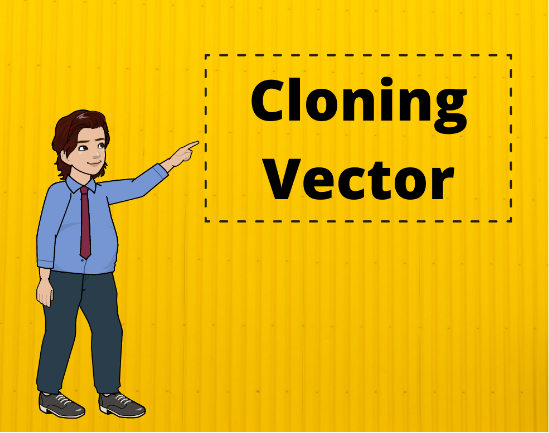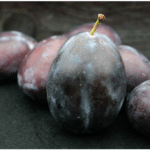To understand about “Cloning vector” it becomes vital to understand about Molecular Cloning where vector plays a tremendous role.
“Molecular cloning” means the generation of multiple identical copies of a DNA molecule. The term cloning was coined on the basis of its origin that is the colonies of the host cells that are utilized to generate multiple copies of a particular DNA sequence.
Importance of cloning
It helps in the isolation and amplification of the selected DNA sequence. Further, by altering this sequence via recombinant DNA technology propagation of novel sequences, mutation of endogenous genes, tagging genes with reporter constructs and much more can be achieved.
We can say that the Molecular technique has given a better platform to researchers for engineering DNA in the way they like.

Vectors
A cloning vector is a genome (small set of DNA) that can acquire the target DNA and then multiply it to form identical copies via its own autonomous replication in a host cell. It acts as a “backbone” for the DNA insert.
A vector acts as a “vehicle” which have the ability to hold the isolated DNA sequence of interest which is needed to be amplified. In easy language, we can say that vector is like a car that holds humans for a specific period of time till we reach the destination.
Fusion of the incorporated DNA fragment from an entirely different organism than the vector DNA and joined together is known as “recombinant DNA construct”.
Qualities of vector
- The ability to snip, alter, and couple DNA molecules in-vitro.
- Capability to replicate independently in an appropriate host, and can combine easily with the other pieces of DNA.
- Ability to incorporate DNA inserts of multiple sizes or lengths.
Types of vectors
The most commonly employed vectors are:
Plasmids: Plasmids are circular DNA that works as autonomously replicating accessory chromosomes in bacteria and bacteriophage which is a virus that has the ability to transport its genetic cargo to bacteria. The sole drawback is that the amount of base pairs that can be easily inserted into a plasmid or phage vector is limited to 1 to 25 kilobase pairs.
Eg: The pBR322 vector where p designates to plasmids, BR designates for its developer Bolivar and Rodriguez,322 distinguishing code that separates it from other developed plasmids in the same lab.
- Lambda Phage (Bacteriophage): Lambda vectors are bacterial viral vectors in which the gene of interest is integrated into the viral genome. It was developed on the basis of the virus competency to infect cells at a faster rate which marked the high frequency of clone genes to be introduced into the cells.
To overcome the limitation of the plasmid, new vectors were introduced like cosmids and artificial chromosomes.
- Cosmids: Cosmids are the hybrid form of a vector, synthetically developed by utilizing lambda phages and plasmids and their DNA can replicate equivalently like that of a plasmid or even be packaged as that of a phage. The shining point of cosmids is that they can carry three times larger DNA inserts than those carried by lambda phage about 45 kb.
- Bacterial artificial chromosomes (BAC): This vector was developed by Mel Simon and his colleagues. It comprises telomeric and centromeric regions which enables it to hold larger DNA inserts around 50-300 kb. They are even utilized to create DNA libraries.
- Yeast artificial chromosomes (YAC): As known that the size limitation plays a pivotal role in the selection of vectors. YAC vectors were developed that have the ability to clone within yeast cells with DNA inserts up to size 500 kb. These vectors were produced in S.cerevisiae rather than in E.coli based on chromosomes rather than on plasmids or viruses.
Features required for vectors
- An origin of replication: Ori is a unique DNA sequence at which DNA replication is initiated that is mandatory for the replication of the vector to occur.
- Restriction sites: Restriction or recognition sites are palindromic sequences where the restriction enzyme makes the cut to incorporate the DNA sequence of choice into the vector.
- A selectable marker: It plays a vital role that helps to distinguish the recombinant construct as only cells comprising the antibiotic resistance will survive when propagated in an antibiotic-containing environment.
Methods employed in the preparation of vector
There are two major ways to make the cloning vector:
- Restriction digestion
- Polymerase chain reaction.
Points to remember
- Plasmids and bacteriophages can multiply in bacterial cells without depending on chromosomal DNA.
- A single copy of DNA is multiplied into identical, multiple copies.







